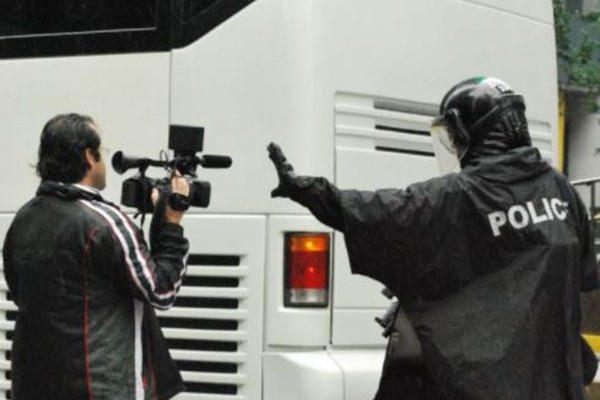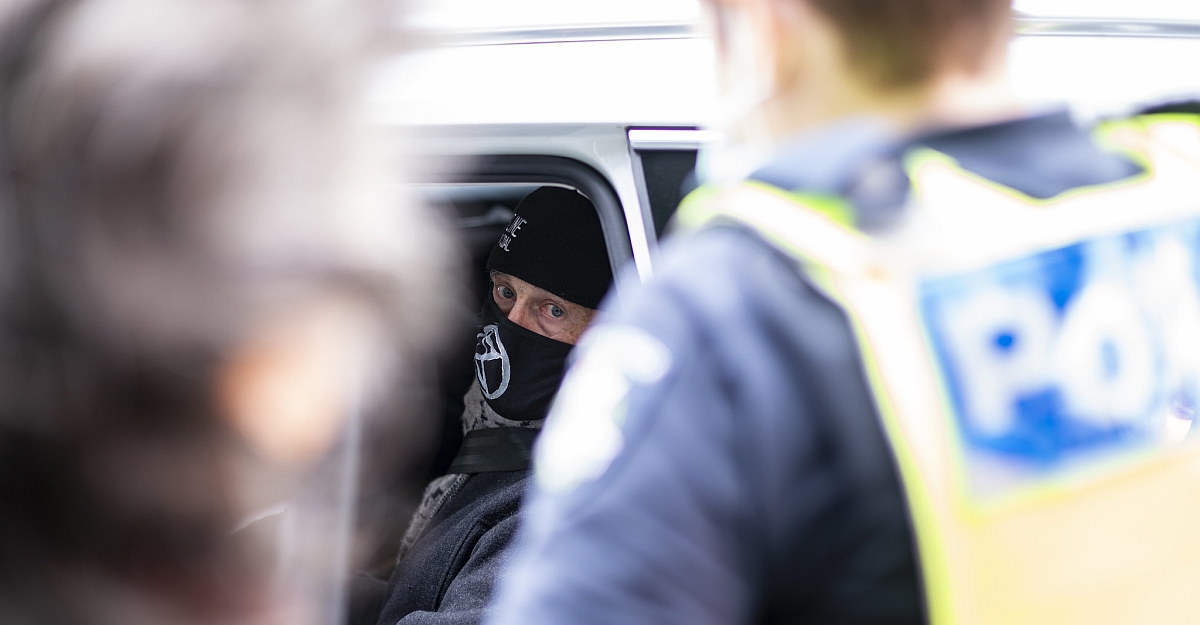For a country that has origins as a penal colony, it is astonishing that 72 per cent of Australians trust police, according to a 2016 poll. But this round number conceals some jagged edges. If you are South Sudanese, unsurprisingly, the likelihood that you will trust police declines considerably. Although there is no equivalent statistical data, anecdotal evidence strongly suggests the same is true for Aboriginal people.
Distrust of police is a symptom of the profound social problems that affect Aboriginal Australia. Decades of economic growth have had barely any impact on the social disadvantages experienced. You get the sense that poverty and over-incarceration in Aboriginal communities are understood as incomprehensible, if regrettable, phenomena, rather than as a political choice.
It is hard to believe that the rates of incarceration of Aboriginal people are actually higher than the rates of incarceration of African Americans in the USA (2,346 per 100,000 in Australia, 1,408 per 100,000 in the US). The problems that flow from over policing are much better understood in the US, a country we like to think of as much more regressive in the quality of its policing. But Aboriginal communities and their allies can take lessons from the US in how to tackle over-policing. One way to make change happen is by demanding improved accountability in policing.
For example, the school-to-prison pipeline is a subject of significant debate in the US, and the focus of intensive campaign efforts from organisations like the American Civil Liberties Union. The concept refers to the policies of zero tolerance to minor infractions of school rules, which have the effect of transforming misbehaviour that would normally result in disciplinary action reclassified as criminal offending. These policies have resulted in black students receiving disproportionately harsher punishments compared to white students, including three times as many expulsions. Black students who are suspended or expelled are three times as likely to be in contact with the juvenile justice system in the following year.
Another effective campaigning strategy that has become popular in American cities is ‘copwatching’. This is not a new concept, but it has developed some novel qualities in an age in which many people carry video cameras around in their pockets. The strategy is based on the principle that a recording of a police interaction can be used to fight for justice and accountability. The sheer size of the population in the US and the aggressive nature of its policing has provided some instructive experiences and tactics that can be usefully applied in other settings.
To that end, I have recently completed a pilot CopWatch program in partnership with the National Justice Project. We ran workshops in Aboriginal communities that were designed to open up discussions about using video technology safely to improve accountability. The workshops aimed to provide local activists with guidance on the relevant laws around videoing police interactions, techniques for filming effectively and sharing footage safely, and to build a network of trusted people to share videos and campaign strategies with. When we put out a call for interested communities, we were invited to four locations (Broken Hill, Redfern, Alice Springs and Kalgoorlie). Since discussing the program in the media, a further twenty communities have expressed interest running workshops.
Central to the success of this pilot was building credibility: Aboriginal people, particularly children, repeatedly talked about not being believed when they told their stories of mistreatment. Given how deeply the average Australian trusts the police, such feelings are understandable. These workshops were aimed at trying to turn that around by putting power back in the hands of Aboriginal people themselves to use their stories as a basis for demanding greater accountability from police.
Take Kianga Mwamba, who pulled over to film the arrest of a black man in the US. Officers arrested her for filming them, despite the fact that she was exercising a constitutionally protected right. They called her a dumb bitch and charged her for assault and resisting arrest. When she was bailed the next day, the footage of the entire incident was deleted from her phone. Fortunately, she had automatic back up on the cloud and retrieved the video. Charges were dropped, and she eventually settled a civil suit for $60,000. Do you think the average person would believe her story if she didn’t have the footage?
Would you believe the officer Michael Slager when he claimed that Walter Scott grabbed his taser from him? That’s what Slager said over police radio as he pursued Scott on foot and fatally shot him. Fortunately, a bystander captured the event on his mobile phone, which told a different story. This footage showed Slager shooting the unarmed Scott in the back as he ran away, then dropping the taser next to his body. Slager has since pleaded guilty to excessive force.
How about the woman who claimed that when an officer pulled her over, and she expressed concern about police shootings, he told her, ‘Remember, we only shoot black people. Yeah. We only kill black people, right?’ Often these experiences need to be seen to be believed – something that is particularly true if the teller doesn’t happen to be white.
But seeing as believing is not always a positive phenomenon. Capturing events on film can also be used as evidence that an offence has been committed. This is just one reason why these workshops are worthwhile: they encourage filming and sharing safely and with purpose. We encourage participants to think about their own safety, and the safety of those whom they film before sharing. The reality is that kids in particular are already filming and sharing their interactions with police. Our aim is to give them tips and techniques to do this well and help them get advice so that they can do it safely.
Using video to document mistreatment and to advocate for change is hardly a solution to the problem of over policing and racism. A camera is not a silver bullet. Interestingly, the most recent study of police using body cameras indicated that the experience of being filmed did not impact police behaviour. But the statistics are based only on assessing the use of police cameras, which can be switched off, and not the impact of citizen journalists in filming for accountability. In any event the result seems unsurprising – the point of filming police interactions is not to make the police feel they are under scrutiny (though this may be part of it), but rather to convince the rest of Australia that there is a problem that needs to be fixed. Filming police interactions holds potential for helping Aboriginal people tell their stories of mistreatment in compelling ways, and countering narratives about ‘shocking street violence’ that often places blame, implied and express, on Aboriginal people. It may also end up being effective evidence in criminal trials that help avoid inappropriate charges and unsafe convictions.
In functional societies, institutions that exercise power over people will be held accountable, and individuals are entitled to feel that they will be listened to when they speak about their dealings with authorities. Copwatching offers some small steps towards that sense of accountability and fairness.



